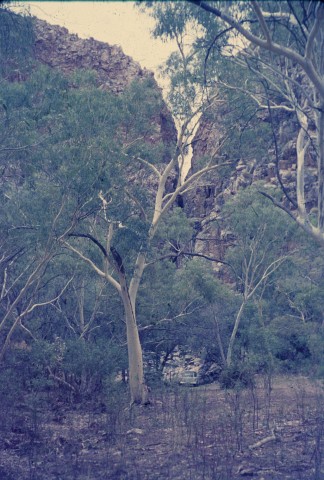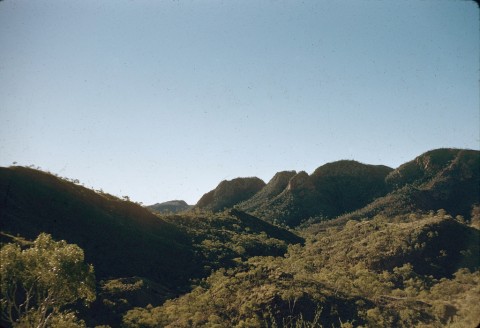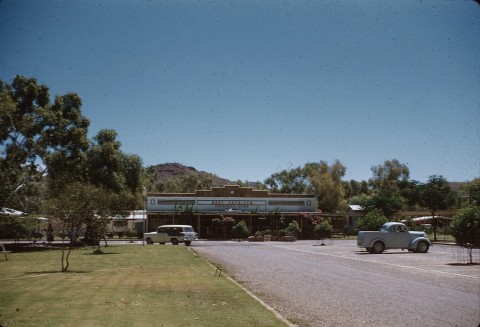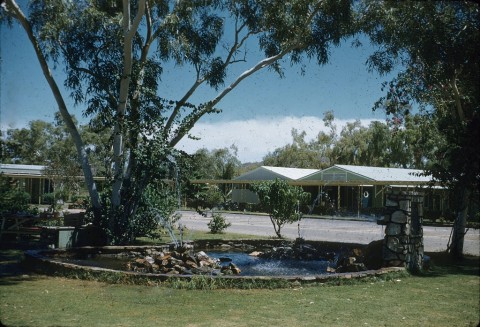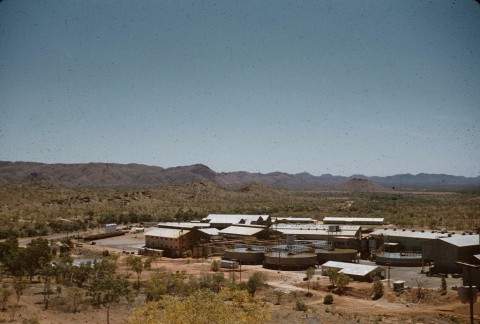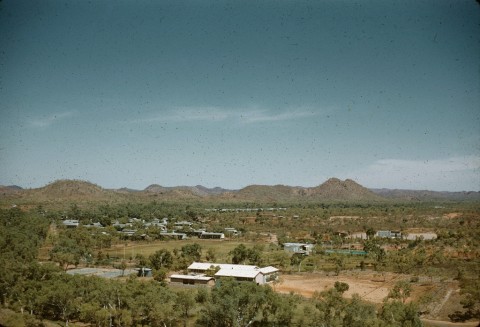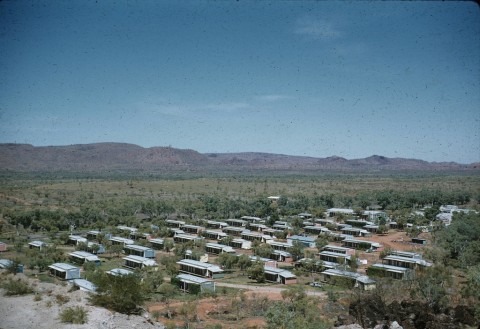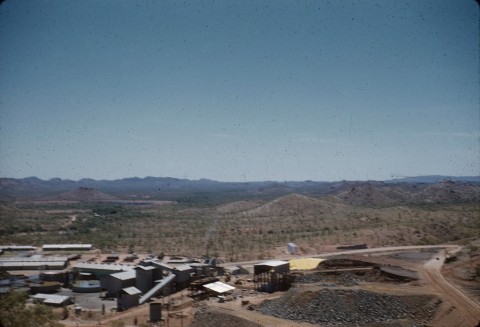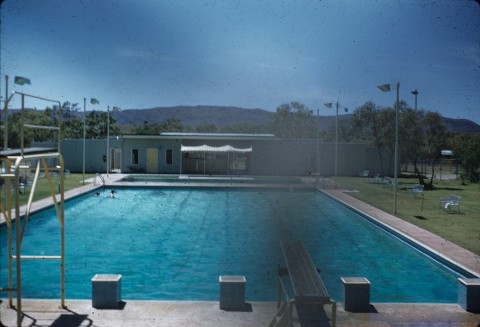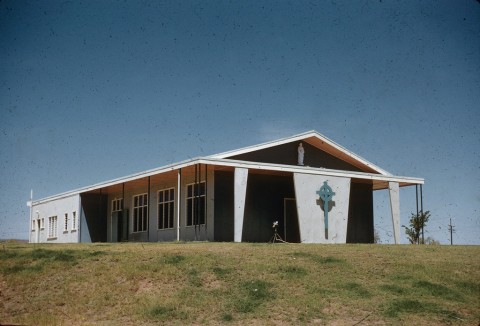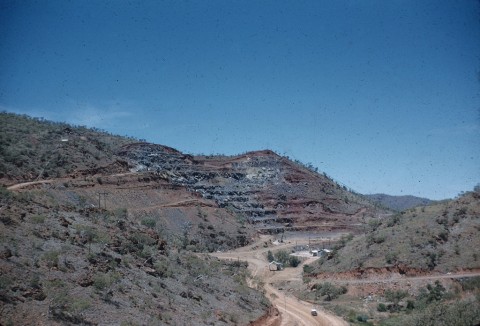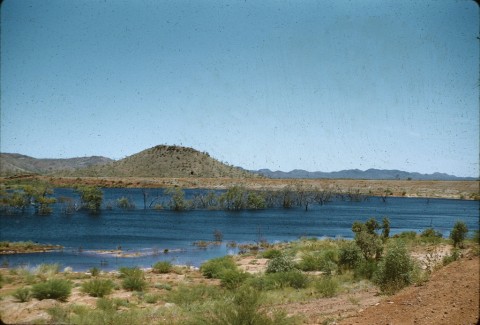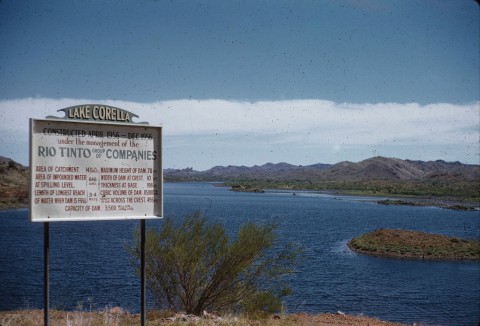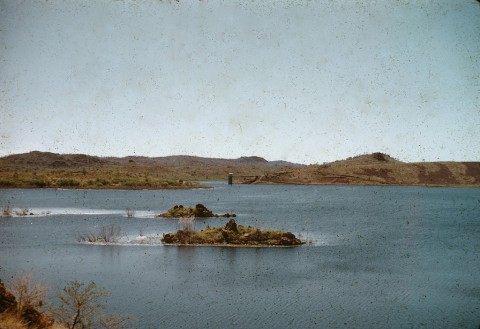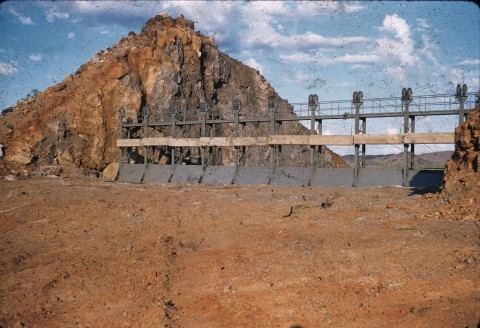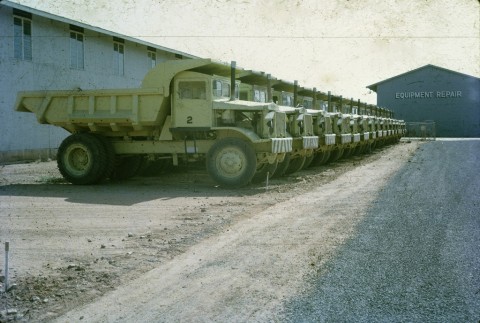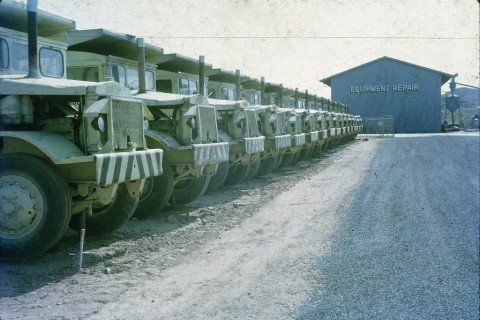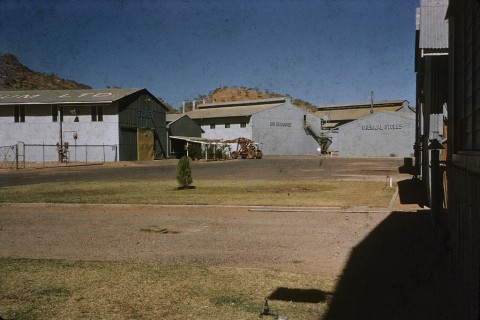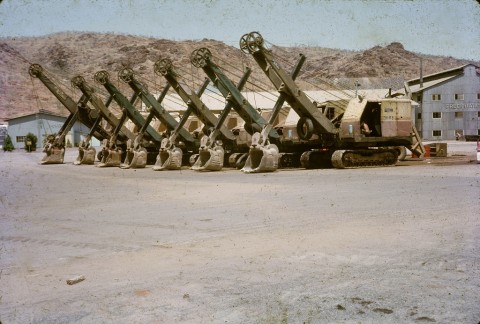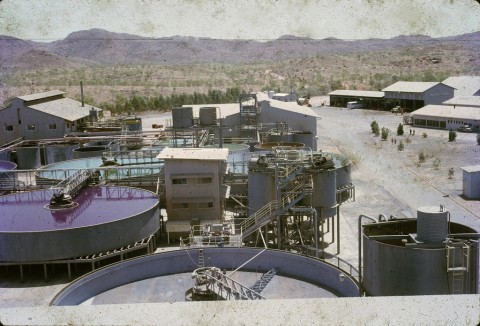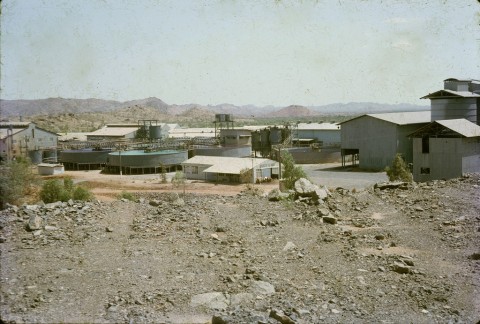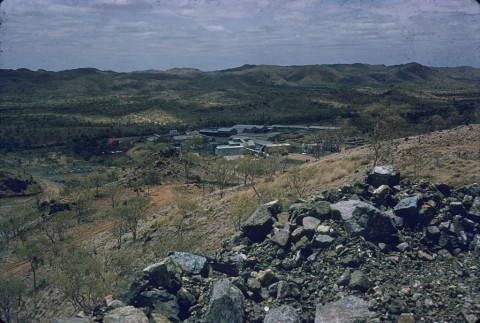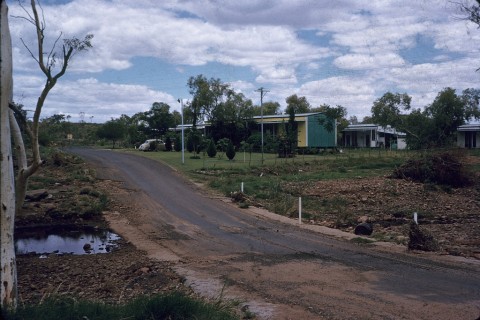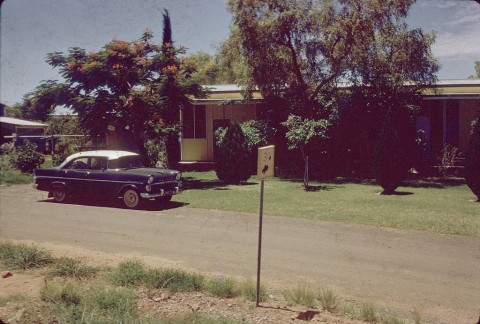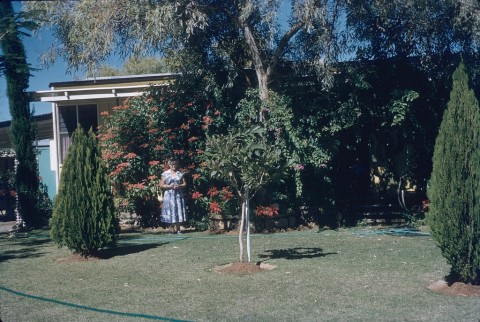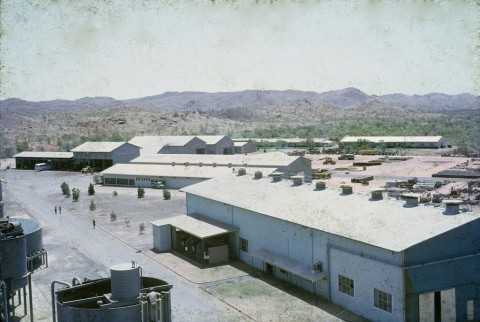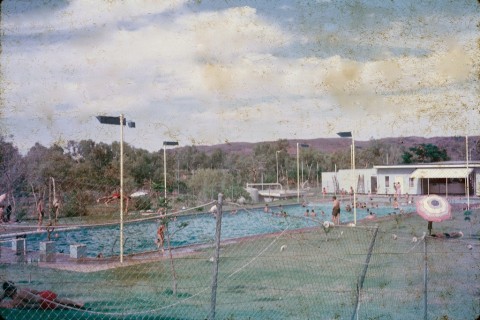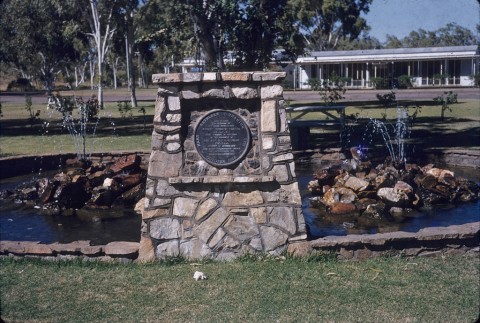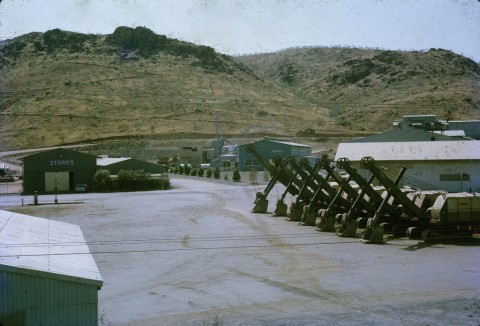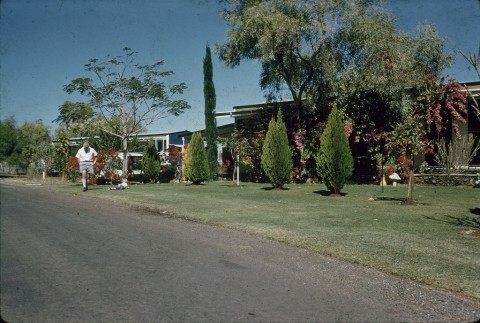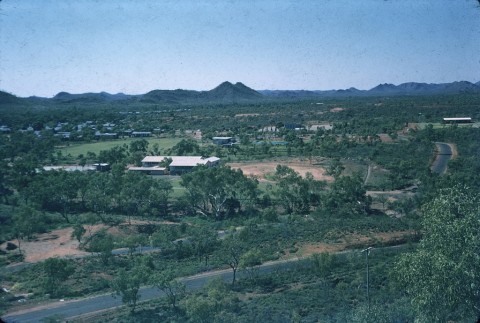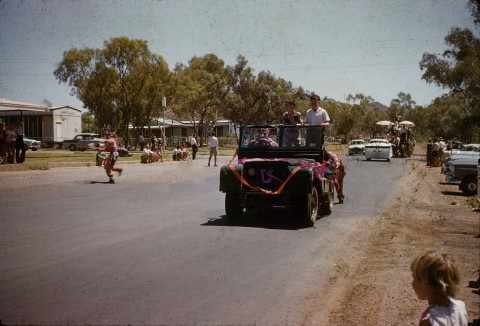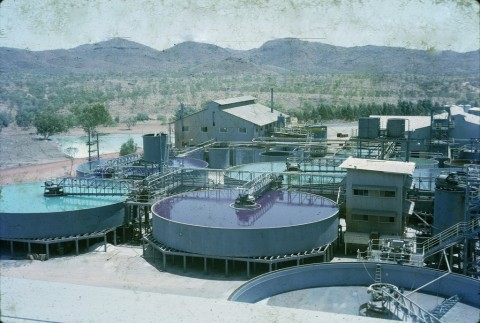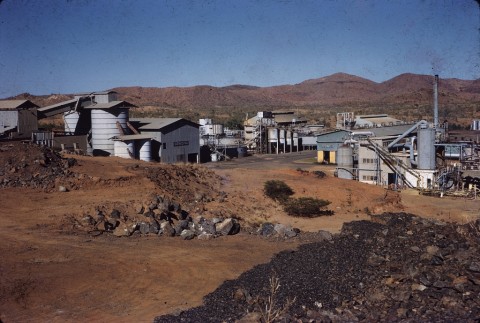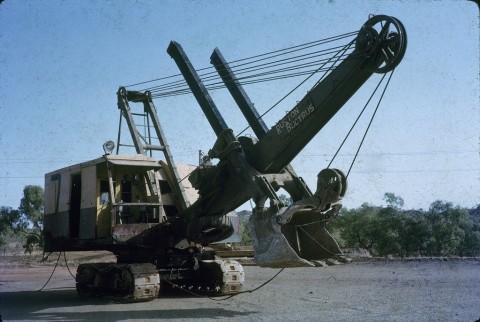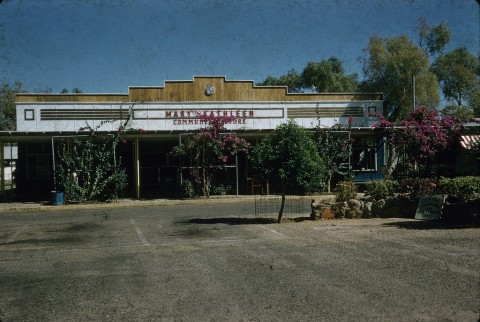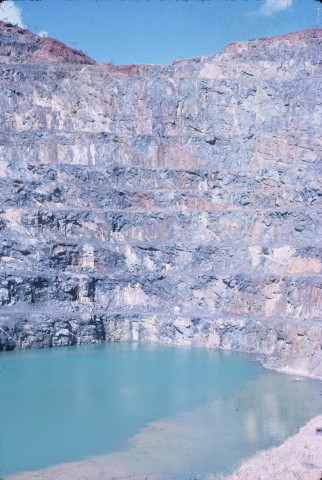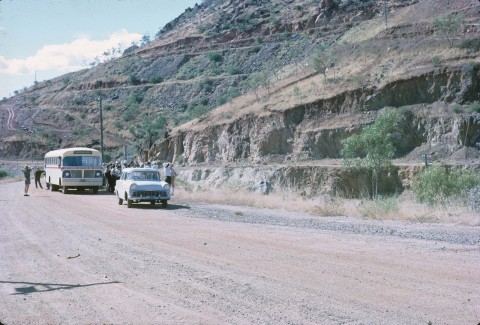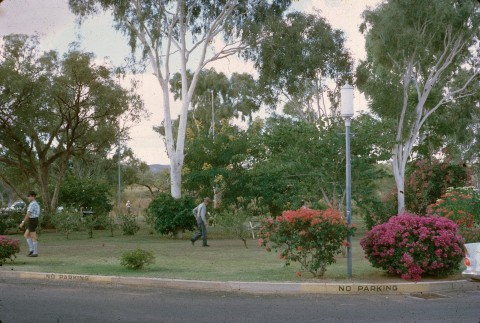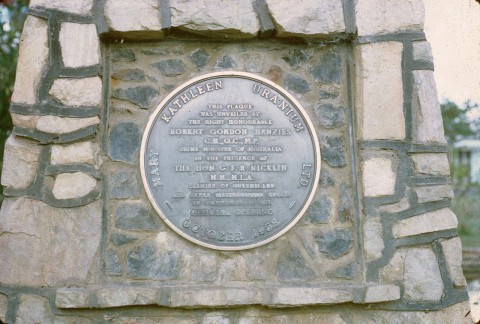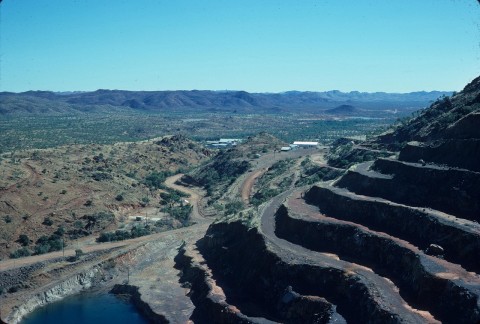Mary Kathleen, was a uranium mining town, about mid way between Mount Isa and Cloncurry in western Queensland, in the Cloncurry Shire.
The Mary Kathleen uranium discovery was made by Clem Walton and Norm McConachy in 1954, and named after McConachy's wife. Prospecting and exploitation rights were subsequently onsold, and in 1955 Rio Tinto Mining formed Mary Kathleen Uranium Ltd to develop a mine and service town. An architect-designed town grew during 1956-58, with reticulated water from a dam, Lake Corella.
The ore was mined by the open-cut method and processed on site. The town, six km away, was built around a shallow valley with a post office, cinema, sports ovals, a school, banks and a community store. By 1963 the major supply contract signed with the UK Atomic Energy Authority had been satisfied ahead of schedule, and large reserves of ore lay at grass. Consequently, the works were closed down. New supply contracts with Japanese, German and American power utilities prompted a re-opening in 1974, with Mary Kathleen's second life extended to 1982 when reserves were finally exhausted. The site was rehabilitated, and most of the buildings sold and removed. The site became well known for fossicking and gem-stone collecting, and numerous relics are held in the Cloncurry/Mary Kathleen Memorial Park and Museum in Cloncurry.
Mary Kathleen's census populations were:
| Census Date | Population |
|---|---|
| 1961 | 982 |
| 1981 | 830 |
Mary Kathleen Uranium Ltd, brochure, 1968
Perry Hardy, The Cloncurry story, Cloncurry, Cloncurry Shire Council, 1984
